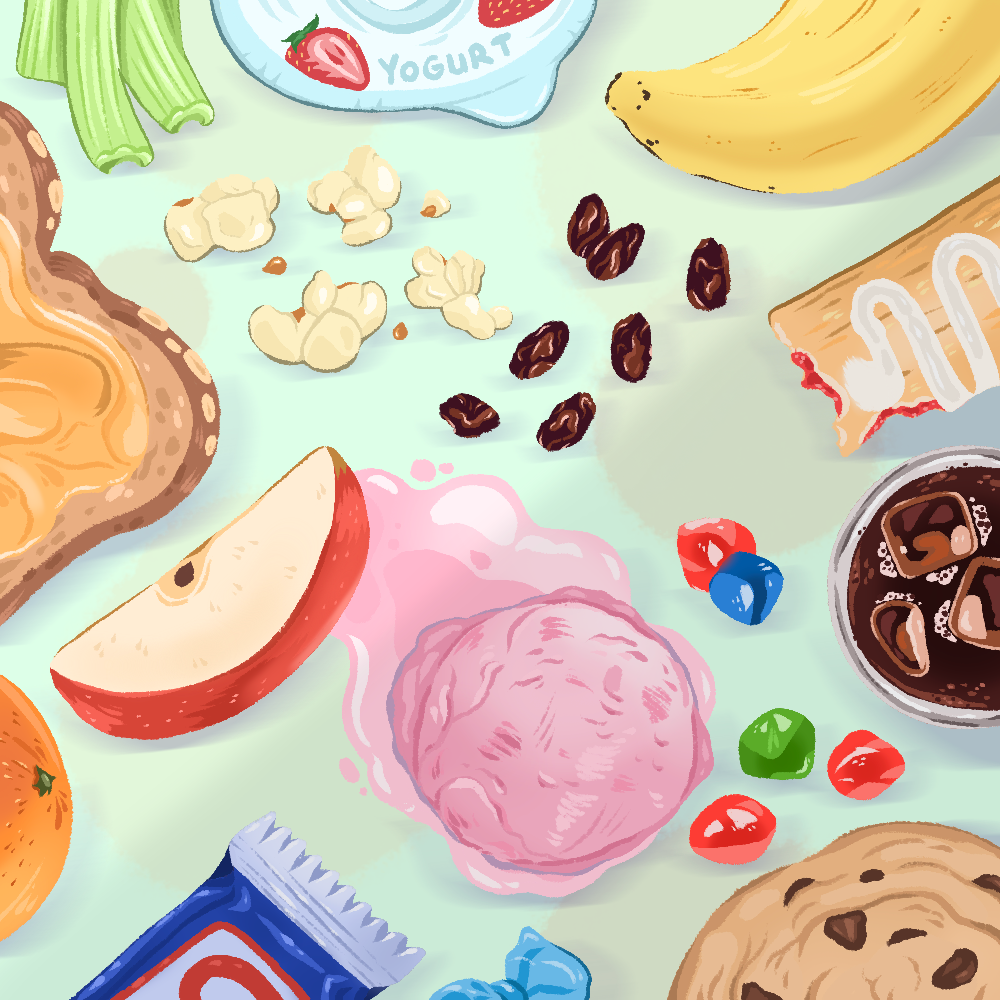Eating well can be difficult for many students and their families. It seems almost impossible among work, school, or extracurricular activities. Many parents might be tempted to buy fast food most nights for dinner and let their children graze from school vending machines during the day. However, you do not need to sacrifice your student’s health in exchange for convenience. With some simple tips and planning, they can be fit.
Five Food Groups
Children need to eat balanced meals. Teach them how much they should eat for their age, sex, and activity level. For instance, myplate.gov suggests that a seven-year-old boy with half an hour to an hour’s worth of moderate exercise should eat one-thousand six-hundred calories daily. A twelve-year-old seventy-five-pound girl who gets less than half an hour’s worth of daily routine should get one-thousand eight-hundred calories.
They should also learn about the five food groups. According to the United States Department of Agriculture, these are fruits, vegetables, grains, protein foods, and dairy.
Nutritious School Lunches
Your kids should know how to make smart lunchtime choices, whether they eat at the school cafeteria or sack lunches. The good news is that many school cafeterias now offer more than just meat and potatoes. Healthy lunchtime foods include:
- sandwiches on whole wheat bread
- low-fat milk
- salad with light dressing
- grilled meats like chicken
- tuna
- baked potatoes

Here’s a list of foods you may consider teaching your students to avoid:
- fried food
- sandwiches on white bread
- sugary drinks like soda
- burger and fries
- greasy foods like pizza or nachos and cheese
- sweets like cookies and ice cream
You should also encourage your kids to get vending machine snacks very sparingly if at all, because these are usually filled with sugar, salt, and fat.
Smart Snacks
Learning is hard work, and sometimes children need to refuel after school. Junk food is cheap and convenient, but too much will give your child problems such as obesity.
Smart snacks include:
- whole wheat toast with peanut butter
- low-fat yogurt
- popcorn without butter and salt
- carrot sticks
- raisins
- fruit
Not-so-smart snacks include:
- chocolate chip cookies
- artificial fruit punch or soda
- microwaveable pastries
- chocolate milk
- ice cream
- artificial fruit snacks
Professionals say fruit is an especially good snack choice. For instance, apples taste just as sweet as candy but do not do as much damage to teeth. While an apple a day might not keep the doctor away, it certainly will keep the dentist away.
Make dinner time family time.
Family dinners have many benefits. Studies show that children who eat family dinners are less likely to try drugs and/or alcohol. They are also less likely to generally behave dangerously. Sometimes it is difficult for busy families to do this, though. Try to schedule dinner together at least two to three nights a week in advance if you work a lot or if your children have extracurricular activities.
Blue Moon Food
Although a healthy diet is important, sometimes your children deserve treats. Things like ice cream, pizza, or soda are called blue moon foods because they are reserved for special occasions. Maybe it is a holiday. Maybe your son or daughter’s sports team has just won a championship. Regardless of the occasion, these should only be eaten sometimes because they are not very nutritious. Blue moon food includes:
- fats like butter, beef fat, and shortening
- oils like palm oil and coconut oil
- sweet foods like lollipops, brownies, and pudding

Your student can easily be healthy with a few changes. They will not only decrease their risk for future ailments such as heart disease and diabetes, but they will also be happier.
Originally published on the Zealousness blog in 2017. Revised and updated in 2022. Read more personal development related articles on Zealousness blog Personal Development – iN Education Inc. (ineducationonline.org)
References:
- “All about Oils.” Choose MyPlate. July 26, 2016. Accessed November 03, 2017. https://www.choosemyplate.gov/oils.
- “MyPlate Checklist Calculator.” Choose MyPlate. Accessed November 03, 2017. MyPlate Daily Checklist | MyPlate
- Miller, Edward. The Monster Health Book: A Guide to Eating Healthy, Being Active & Feeling Great for Monsters & Kids! New York: Holiday House, 2012.
- “USDA.” USDA. Accessed November 03, 2017. https://www.usda.gov/.


















